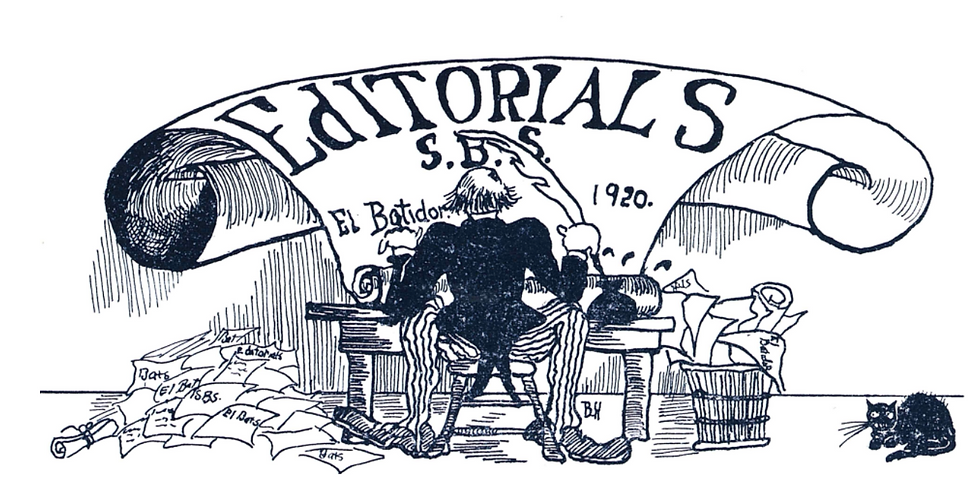Junior Case Studies 2025
- miagroeninger5
- May 23
- 3 min read
By: Karina Strofs '27

Each spring, the Case Studies program offers Cate juniors a rare opportunity: to step into the shoes of a college admissions officer. Held this year at Cate on April 22, the event brought together juniors from Cate, Thacher, Laguna Blanca, and Carpinteria High School for an immersive experience in college admissions. The program, which has been running at Cate since the 1970s, is designed to clarify the college process and help students think more critically about how applications are reviewed.
What is the Case Studies program?
Forty-eight representatives from colleges and universities nationwide come to Cate to participate in the Case Studies program.
The program starts with a mock admissions committee; students are paired with an admissions officer and given three fake applications from the Common App review. They get grades, information about the school they are applying and currently attending, extracurriculars, recommendations, et cetera. From this information, they must decide which applicant to accept, which to waitlist, and which to reject.
Cate does this to demystify the college application process. By viewing different application files, juniors learn firsthand how admissions officers balance academic records with personal qualities, institutional priorities, and contextual factors. Students see that there is rarely a single “right” answer and that fit often matters as much as statistics. While this fake application review is helpful to understand, it is incredibly unrealistic in a real admissions scenario, as there is no situation where officers would look at three applicants in isolation.
After reviewing applications, all the students get together, and the total number of acceptances, waitlists, and rejections is shown for each student. The idea is that each admissions officer has a different way of looking at applications, so that each fake student will get a variety of acceptances, waitlists, and rejections.
After the mock admissions committee, each admissions representative sets up a stand at a college fair. Students circulate among the tables, asking quick questions and picking up basic facts – where the college is located, how big it is, what majors stand out, and what the application process looks like. The goal is simple: give juniors an easy way to discover schools they might not have heard of and gather first-hand insight straight from the people who read applications.
What did students think?
Students shared positive takeaways from the Case Studies program:
Philip Choi ‘26 said, “It was cool. It gave everyone a chance to really see what a college application looks like. Especially the recommendations and the way admissions officers looked at it were interesting.”
Mo Kanda-Gleeson ‘26 said, “I learned a lot from reviewing applications with admissions officers. It opened my eyes to what the admissions process is like from the other side.”
Madeline Losey ‘26 said, “It was helpful seeing a college admissions officer's opinion on them and what they focused on.”
Across the board, juniors valued the insider perspective—seeing how real admissions officers weigh recommendations, activities, and context gave them a clearer, more grounded view of how applications are judged.
How did the Case Studies program go this year?
Amy Giles of the College Counseling Office praised both the organization of the day and the effort shown by the students. “It is very tightly run. We know exactly what to do every year. We, the CoCo, make all these signs and give everybody what they need. But with more than 200 visitors on campus, four people cannot possibly make it go smoothly. This junior class really stepped up and were amazing hosts. They really made sure the day went smoothly, and we couldn’t have done it without them.”
This year’s Case Studies program stood out for its smooth execution and the thoughtful engagement of the students. It allowed them to gain insights not just into what colleges look for, but also into how they themselves might stand out in a highly individualized process.
Takeaway:
Even though the scenario presented by the Case Studies program is more controlled and simplified than real-world admissions, the core lessons remain deeply valuable. The program helps students shift from worrying about what colleges want to thinking about how they can present their most authentic, most compelling selves. It’s a reminder that there’s no single formula for admission, and that behind every decision is a person interpreting a story.



Comments